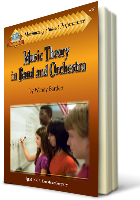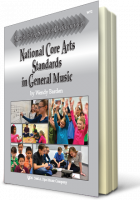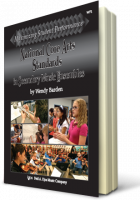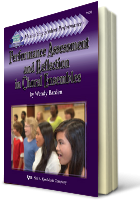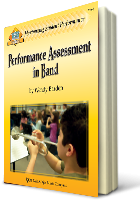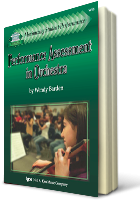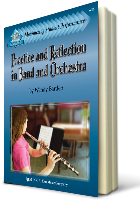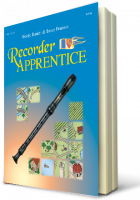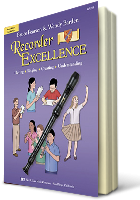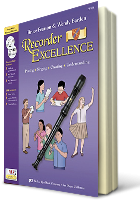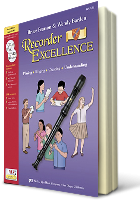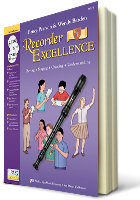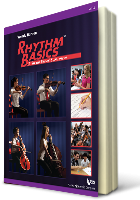"Striking a Chord" for Music Education
The NAMM Foundation is in the business of promoting music making. Members of NAMM—the National Association of Music Merchants—include instrument and equipment manufacturers, software developers, music publishers, and owners of your local music store. Collectively, they’ve literally touched just about everything in our music classrooms. Through the Foundation, members also support music making—for young and old—through research, grants, and advocacy resources.
The NAMM Foundation and Grunwald Associates recently released a report on public perception of music and arts education titled Striking a Chord: The Public’s Hopes and Beliefs for K-12 Music Education in the United States: 2015. In this report, the “public” is represented by 1,000 teachers (only 12% of whom teach in the arts) and 800 parents (with children in elementary, middle, and/or high school schools).
.
As we would hope, there is significant support for music education from both teachers and parents! Striking a Chord is quite an extensive report, but here are three themes I found in the results.
First, respondents believe it is extremely or very important for young people to be able to participate in music and arts education in school: Parents (64%) and Teachers (77%). Parents believe music education should be required in high school (50%), and slightly more believe it should be required in middle school (57%). Of teachers, 63% believe music education should be required in middle school and 52% feel it should be required in high school. By the way, 26 states require arts credit for high school graduation, and 18 more states require that high school students complete elective credits from a range of courses such as the arts, world language, or career and technical courses.1
Secondly, survey respondents strongly believe students’ overall academic performance is positively impacted by participation in music education: Parents (79%) and Teachers (87%). If you ever need, various research studies about student achievement and music education are easily found on the National Association for Music Education website (http://www.nafme.org). Too, check out NAfME’s broader minded™ discussion about the benefits and impact of music education that go well beyond improved test scores (broaderminded.com).2
Finally, Striking a Chord respondents believe funding is critical for a quality music program, and in many cases, funding for music in their own school is less than adequate. In the survey, respondents were given this scenario: Assuming a limited budget and the need for cuts, which programs would you be most willing to cut from your child’s school? Please rank the following items from 1 to 15, with “1” being the one you’re most willing to cut and “15” being the one you’re least willing to cut. The choices given ranged from transportation to athletics to teachers, and everything in between. It was affirming to see both respondent groups—parents and teachers—ranked “Music and arts education” as 13 of 15 on the “cut” list.
Yes, and… Do you know what parents in your school community think of music education? How do the other teachers in your building feel?
One recommendation coming out of Striking a Chord is for each of us to conduct research to better understand the perceptions of stakeholders in our own schools/districts. I would add that it’s best to be proactive in one’s research and do it at a time when programs (and budgets) aren’t threatened.
Several years ago, my 8th grade band did an action research project. My goal wasn’t to build support for our music department (even though it did), but rather to show my students that many, many people enjoy music as an avocation… and you could/should continue to be involved in music classes even if you don’t plan to take it as a career path.
Each band student signed up to interview three adults in the school. Collectively they talked with everyone from the principal, to the social studies teachers, to the “lunch ladies.” Here are some of the questions they asked, which were always followed up with “please explain:”
- Were you involved in music in junior high?
- Were you involved in music in high school?
- Do you like to listen to music?
- Do you compose?
- Do you sing or play an instrument now?
- Does anyone else in your family sing or play an instrument?
- Do you have a favorite memory of music when you were in school?
Students also asked the same questions of their parents and a neighbor. We compiled the results, and very interesting discussions followed. Responses they (and I) received from across our school community were both positive and validating.
Perhaps it’s time to strike a[nother] chord in your own program. What could happen if your students did similar research in January-February, and reported results during Music In Our Schools Month?
Thanks for pausing with me for a few minutes in your busy week. Have a good one!
____________________
1Arts Education Partnership. A Snapshot of State Policies for Arts Education, March 2014. http:// http://www.aep-arts.org/wp-content/uploads/2014/03/A-Snapshot-of-State-Policies-for-Arts-Education.pdf (accessed June 6, 2015).
NAMM Foundation and Grunwald Associates LLC (2015). Striking a Chord: The Public’s Hopes and Beliefs for K-12 Music Education in the United States. https://www.nammfoundation.org/articles/striking-chord-hopes-and-beliefs-k-12-music-education (accessed May 30, 2015).
2National Association for Music Education. http://www.nafme.org/take-action/what-to-know/ (accessed June 9, 2015).




